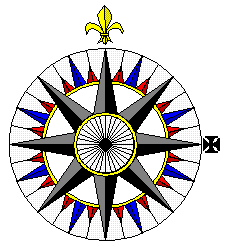The Problem with Dollars
 There are several. Like, who has them and what they’re doing with them. Another issue is that they’re too small for complex folding and not easily available in all areas.
There are several. Like, who has them and what they’re doing with them. Another issue is that they’re too small for complex folding and not easily available in all areas.
I was thinking about the fold I opened this site with, the Dollars to Doughnuts fold. If you are in, oh, I don’t know, the National University of Singapore or Omsk or the Faroes, maybe, you might not have lots of dollars on hand. Or maybe you have just a couple and you’d like to practice a bit on something first. Something big with the lines drawn on it, so you can see what you’re doing.
Behold the Big Bill Dollar to Doughnuts pdf. It’s way big, 2.4 MB. The bill is 10? inches by 4? inches (or 291.5 centiliters, for those of you using the système vichyssoise d’unités) and has the crease pattern in conventional dashes and dots emblazoned upon it. There’s still a dollar sized CP and a hints sheet, too.
We think that this reproduction of the dollar bill is legal, but it’s hard to say what’s legal anymore because the enforcement of laws is now in the hands of double minded men, unstable in all their ways.
 From the age of the dinosaurs
From the age of the dinosaurs








